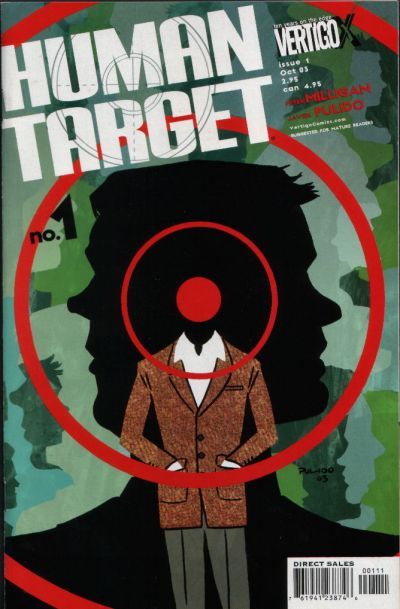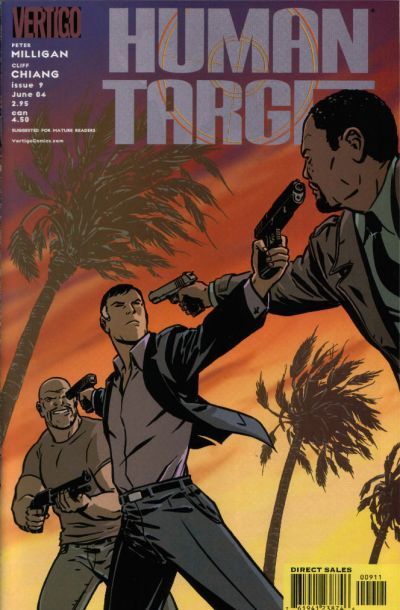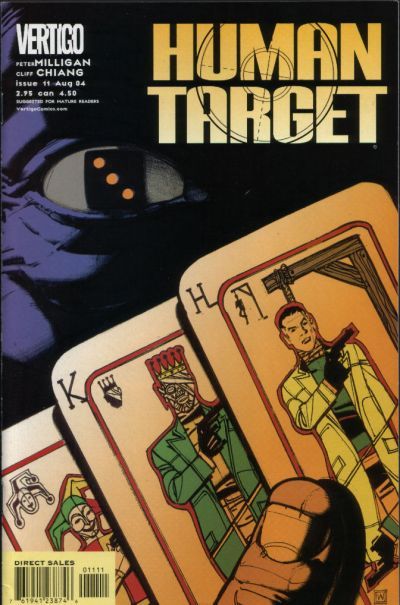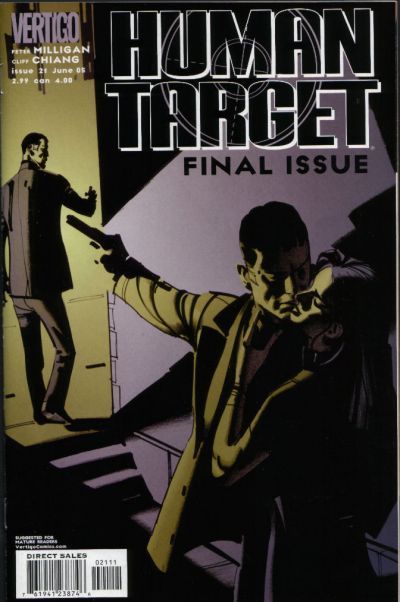Here's the next look at a beloved run (of someone) that did not make the Top 158 of the Top Comic Book Runs.
Enjoy!
Peter Milligan's Human Target
Human Target #1-21
Peter Milligan had already written an excellent Human Target mini-series before he launched an ongoing featuring Christopher Chance, the man who will disguise himself as anyone so as to serve as, well, a human target for them. If they suspect assassination, he'll step in and BE you until the assassins are stopped.
Of course, this being Peter Milligan, the stories were more complex than that - and boy, were they complex!
But the complexity was built around a great understanding for human emotions and the effects of what happens when you really truly "take over" someone else's life.
Javier Pulido was the original artist, and he was very good, but then Cliff Chiang took over, and he was even better.
The series had crisp, impressive artwork and strong stories - it was a delightful series.
Here is why reader Eric had it high on his list...
Though I did not vote this series number one on my top ten list (as the proprietor of http://www.vicsage.com, I'd be remiss if I didn't choose the O'Neil/Cowan run of the Question), this was the one pick of my list that I'd hoped would make the top 100, but suspected that others might not have enjoyed it as much as me. Honestly, part of me wanted to write this mini-appreciation just to see if anyone else voted for it at all.
I missed out on the original Human Target mini-series with the late Edvin Biukovic on art, and so my first introduction to Christopher Chance, the titular Human Target, was in the stand-alone "Final Cut" -- a psychological thriller in the strictest sense of the word. While working against time to find a kidnapped child star, Chance falls so deeply into his roles -- the serial-killing screenwriter Davey King and the perfect WASP husband, Frank White -- that the already-strained boundaries of his own identity start to blur. Milligan's tight story is brought to life by the gorgeous artwork of Javier Pulido -- who mimics the style of Saul Bass in the trade dress -- and the vibrant colors of Dave Stewart. Were "Final Cut" made into a film, critics would call it the next "Usual Suspects" or "Memento," and they would be wrong -- this hypothetical film would be better.
"Final Cut" segued into a regular Vertigo series that continued Chance's adventures as a body-double-for-hire for 21 issues, the first five issues with art by Pulido, and the remainder by equally adept artist Cliff Chiang. Chance is not the only character to experience an identity crisis in these issues, as we meet a corporate scapegoat who is able to fake his death in the tragedy of Sept. 11th, a baseball player who's "lost a step" and turns to drugs and then Chance for help, a member of a 60s radical group who finds himself to not be so radical anymore, and, in the end, Chance's own crazed ex-assistant, who wants Chance's identity for his own.
Throughout the series, Milligan uses subject matter that others might advertise as, "Ripped from the headlines," but unlike when similar timely material is used in television police procedurals, there seems to be a poignancy and a deeper intention here. In Human Target, Milligan and his artistic cohorts are crafting an examination of American identity (the second trade collection is called "Living in Amerika") after Sept. 11th that at times seems quite potent. This examination never feels complete, but one wonders what Milligan would have been capable of had the series not met its demise after barely 20 issues.
Thanks, Eric!





